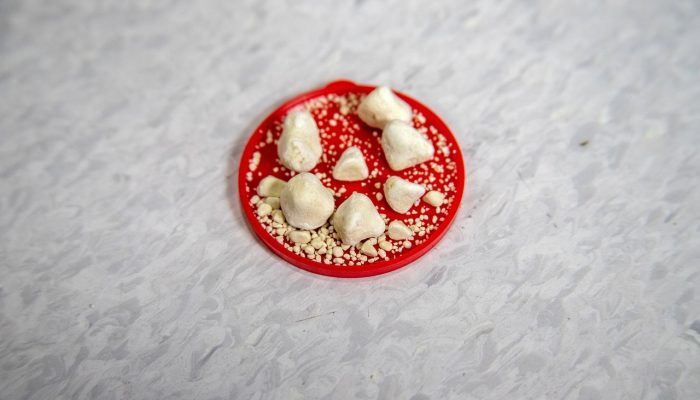Introduction
Caused by the bacterium Clostridium tetani, tetanus is a serious infection tied to puncture wounds like dog bites. This sly invader thrives in low-oxygen spots, releasing a toxin that can tighten muscles, trigger spasms.
Homeopathy can be helpful in supporting the body’s natural healing, so what follows is an exploration of how homeopathic principles might play a role in responding to the aftermath of a dog bite.
Tetanus: A Quiet Menace Unleashed
Tetanus doesn’t announce itself. It slips in through breaks in the skin, especially deep, dirty wounds like those from a dog’s bite. It thrives in places where oxygen is scarce. Once there, Clostridium tetani produces a neurotoxin that disrupts the nervous system, starting with subtle stiffness and escalating to full-body rigidity in severe cases. A bite might seem minor, but its depth and the presence of saliva or dirt can make it a perfect breeding ground. Understanding this risk is the first step to acting wisely.
Homeopathy’s Unique Angle: Supporting the Whole Self
The body’s signals matter and responding to them with homeopathic support and broader care keeps you ahead of the curve. Homeopathy focuses on individuality, meaning remedies shift depending on what you’re feeling, from the wound’s appearance to your overall state. It’s a gentle, holistic lens, focusing on harmony
When it comes to dog bites, homeopathy offers a toolkit of remedies drawn from nature, each suited to specific signs. Here’s what stands out based on traditional homeopathic wisdom:
Ledum Palustre: The Cold Comfort
Ledum palustre, derived from marsh tea, is often considered the go-to homeopathic remedy for puncture wounds, including animal bites. If the bite feels cold, looks pale or bluish, and cold compresses bring relief, this remedy might be valuable. It’s thought to encourage healing from the deeper layers outward, supporting the body as it deals with the insult of a bite.
Typical use: Ledum 30C (a common strength for things like bruises or bites), taken every hour for a few doses right after the bite, then a few times daily for a couple of days.

Hypericum Perforatum (also known as St John’s Wort)
Hypericum Perforatum: Soothing the Nerves
A bite that stings with sharp, shooting pain calls for Hypericum perforatum, or St. John’s wort. Known as a remedy for nerve-rich areas (like fingers, toes, or face), Hypericum is suggested if there’s shooting pain along the nerves from the bite site. It’s sometimes used alongside Ledum, especially if tetanus is a concern, due to its reputation for supporting nerve injuries and preventing infection-related complications.
Typical use: Hypericum 30C, taken similarly to Ledum, especially if pain is a prominent symptom.
Arnica Montana: Easing the Shock
Arnica montana shines in the aftermath of physical shocks. If the bite leaves bruising, swelling, or the person experiences anxiety, this remedy might help as a relief. It’s about addressing the body’s initial shock, setting the stage for deeper healing. While Arnica is best known for bruising and trauma, it can be used to address initial shock and swelling. It’s not specific to tetanus prevention but could help with the overall trauma of the bite.
Typical use: Arnica 30C, a few doses right after the injury to calm the system.
Silicea: Clearing the Way
Made from silica, it’s believed to help the body push out unwanted debris, keeping the wound clean as it heals. If the bite area becomes red, hot, swollen, and throbs, which are signs of inflammation that could precede infection, Belladonna might be considered. It’s less about tetanus directly and more about managing early inflammatory responses.
Typical use: Belladonna 30C, every few hours if these symptoms appear.
Timing and Teamwork: Acting with Care
These remedies are based on the idea that they stimulate the body’s ‘vital force’ to heal itself. For example, Ledum’s historical use for tetanus comes from early homeopathic texts, where it was part of a trio (with Arnica and Hypericum) for puncture wounds. The bacteria thrive in low-oxygen environments (deep wounds), so after a dog bite, rinse the wound well with soap and water to flush out troublemakers. Keep it covered and watch for changes: redness, heat, or stiffness anywhere in the body.

This article has been written as a follow up to a question posed by one or our Associates posted on the HCHF SCIO Facebook Group. Many thanks for asking. 🙂
Our reading room’s an opportunity to have personal time browsing our shelves full of wisdom.
The Helen Campbell Homeopathy Foundation SCIO is a registered educational charity focused on sharing homeopathy’s fascinating history and wonderful wisdom. We’re here to inform, not prescribe!





